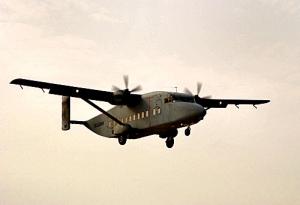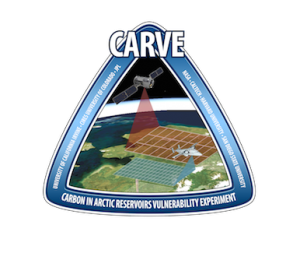

Carbon in Arctic Reservoirs Vulnerability Experiment
The carbon budget of Arctic ecosystems is not known with confidence since fundamental elements of the complex Arctic biological-climatologic-hydrologic system are poorly quantified. CARVE collected detailed measurements of important greenhouse gases on local to regional scales in the Alaskan Arctic and demonstrated new remote sensing and improved modeling capabilities to quantify Arctic carbon fluxes and carbon cycle-climate processes. Ultimately, CARVE provided an integrated set of data that will provide unprecedented experimental insights into Arctic carbon cycling.
CARVE used the Arctic-proven C-23 Sherpa aircraft to fly an innovative airborne remote sensing payload. It included an infrared camera and a nadir-viewing spectrometer to deliver the first simultaneous measurements of surface parameters that control gas emissions (i.e., soil moisture, freeze/thaw state, surface temperature) and total atmospheric columns of carbon dioxide, methane, and carbon monoxide. The aircraft payload also included a gas analyzer that links greenhouse gas measurements directly to World Meteorological Organization standards. Deployments occurred during the spring, summer and early fall when Arctic carbon fluxes are large and change rapidly. Further, at these times, the sensitivities of ecosystems to external forces such as fire and anomalous variability of temperature and precipitation are maximized. Continuous ground-based measurements provided temporal and regional context as well as calibration for CARVE airborne measurements.
CARVE science filled a critical gap in Earth science knowledge and satisfied high priority objectives across NASA’s Carbon Cycle & Ecosystems, Atmospheric Composition, and Climate Variability & Change focus areas as well as the Air Quality and Ecosystems elements of the Applied Sciences program. CARVE complemented and enhanced the science return from current NASA and non-NASA satellite sensors.
Principal Investigator: Charles Miller
Project Manager:Steve Dinardo
Mission Manager: Anthony Guillory
